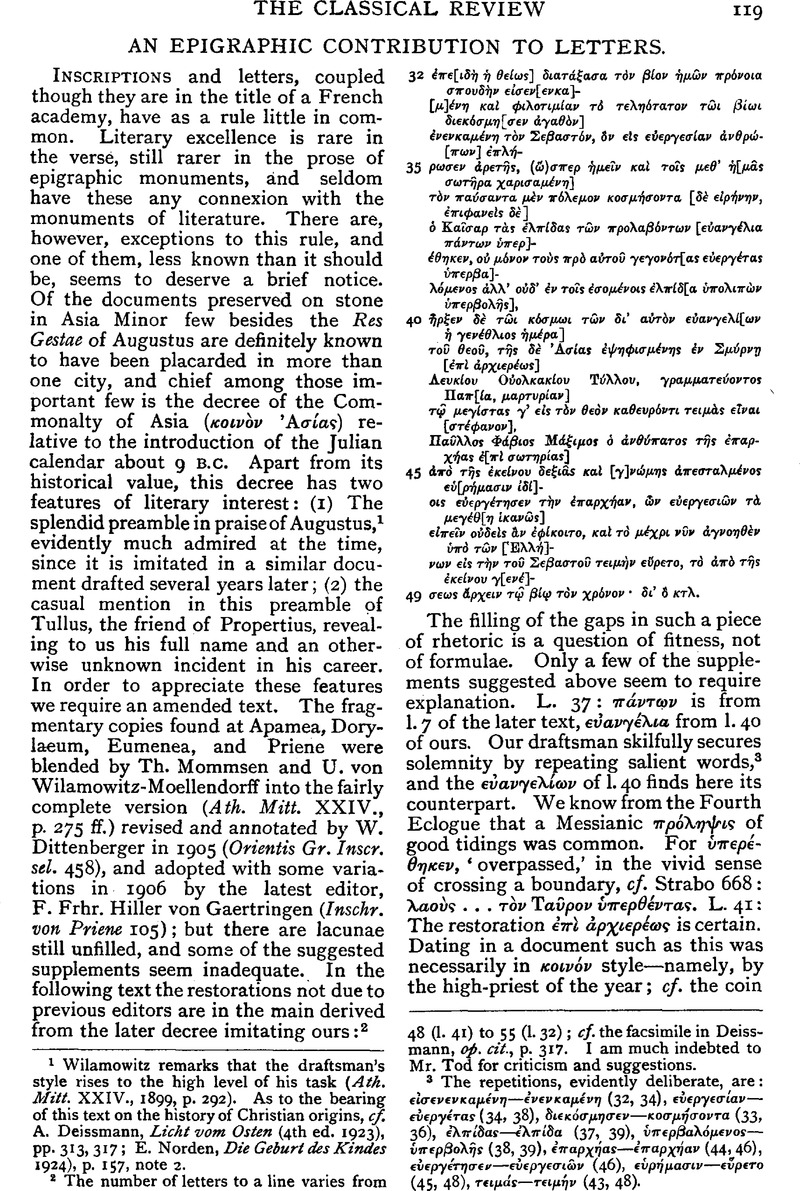No CrossRef data available.
Published online by Cambridge University Press: 27 October 2009

page 119 note 1 Wilamowitz remarks that the draftsman's style rises to the high level of his task (Ath. Mitt. XXIV., 1899, p. 292). As to the bearing of this text on the history of Christian origins, cf. Deissmann, A., Licht vom Osten (4th ed. 1923), pp. 313, 317Google Scholar; Norden, E., Die Geburt des Kindes 1924), p. 157, note 2Google Scholar.
page 119 note 2 The number of letters to a line varies from 48 (1. 41) to 55 (1.32); cf. the facsimile in Deissmann, op. cit., p. 317. I am much indebted to Mr. Tod for criticism and suggestions.
page 119 note 3 The repetitions, evidently deliberate, are:  .
.
page 120 note 1 Gaebler calls this high-priest ‘eponymer Provinzialoberpriester’ (Z. f. Num. XXIV., 1903–04, p. 2562).
page 120 note 2 The patronymic of Papias is probably omitted because he was of secondary rank; cf. the names in I. G. Rom. 1756, 11. 6, 120. For another γραμματεὺς Ἀσας see Forsch. in Eph. III., no. 40.
page 120 note 3 If we prefer to this reading of Postgate that of Hosius, ‘accepti pars eris imperii,’ the inference as to the official position of Tullus remains unaltered.
page 120 note 4 Cn. Domitius Ahenobarbus and C. Sosius; cf. Pauly-Wiss. Hbbd. XIX., 324.
page 120 note 5 The full style of the high-priest was ![]() , A. J. A. XVIII., 1914, p. 355.
, A. J. A. XVIII., 1914, p. 355.